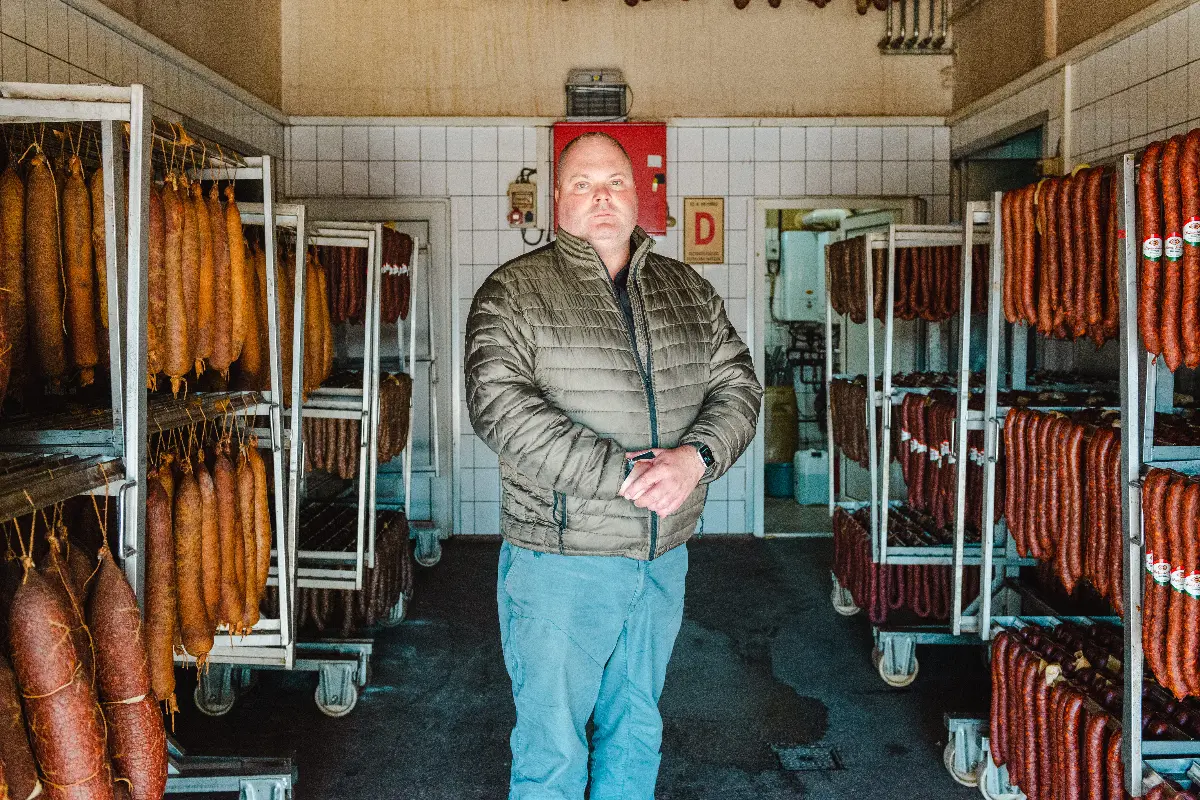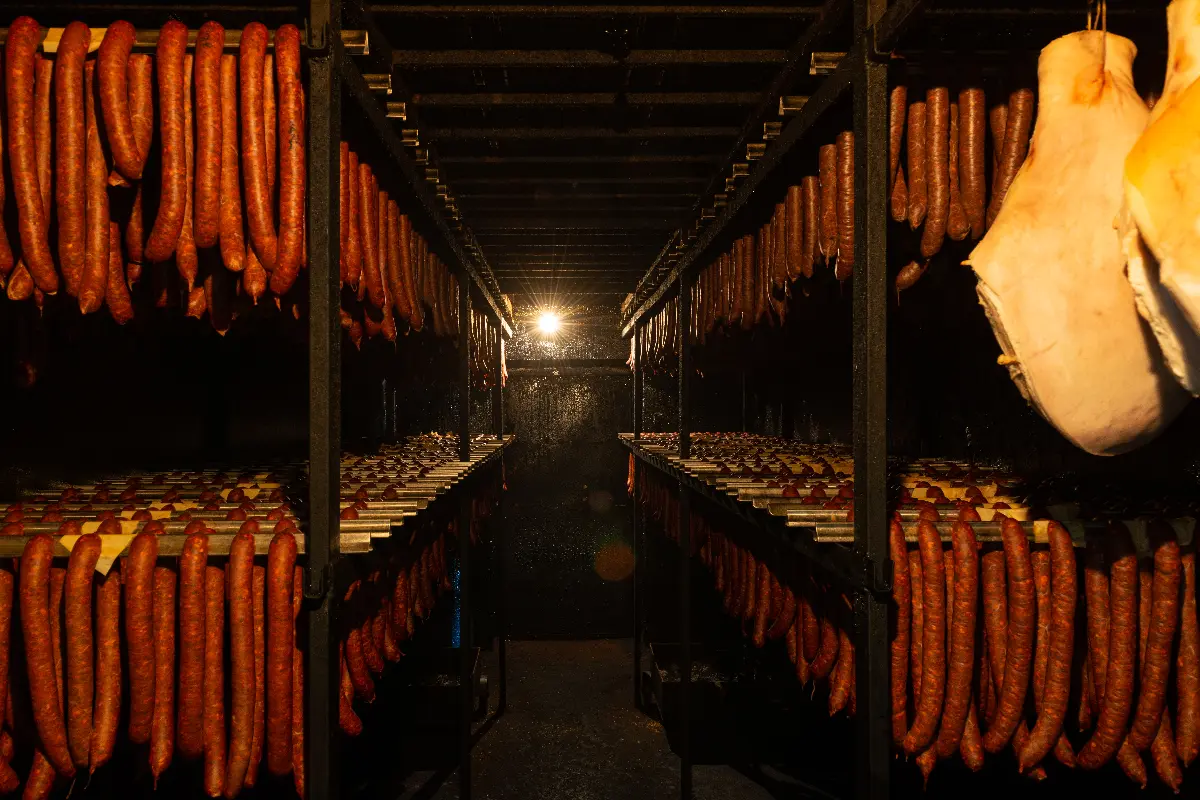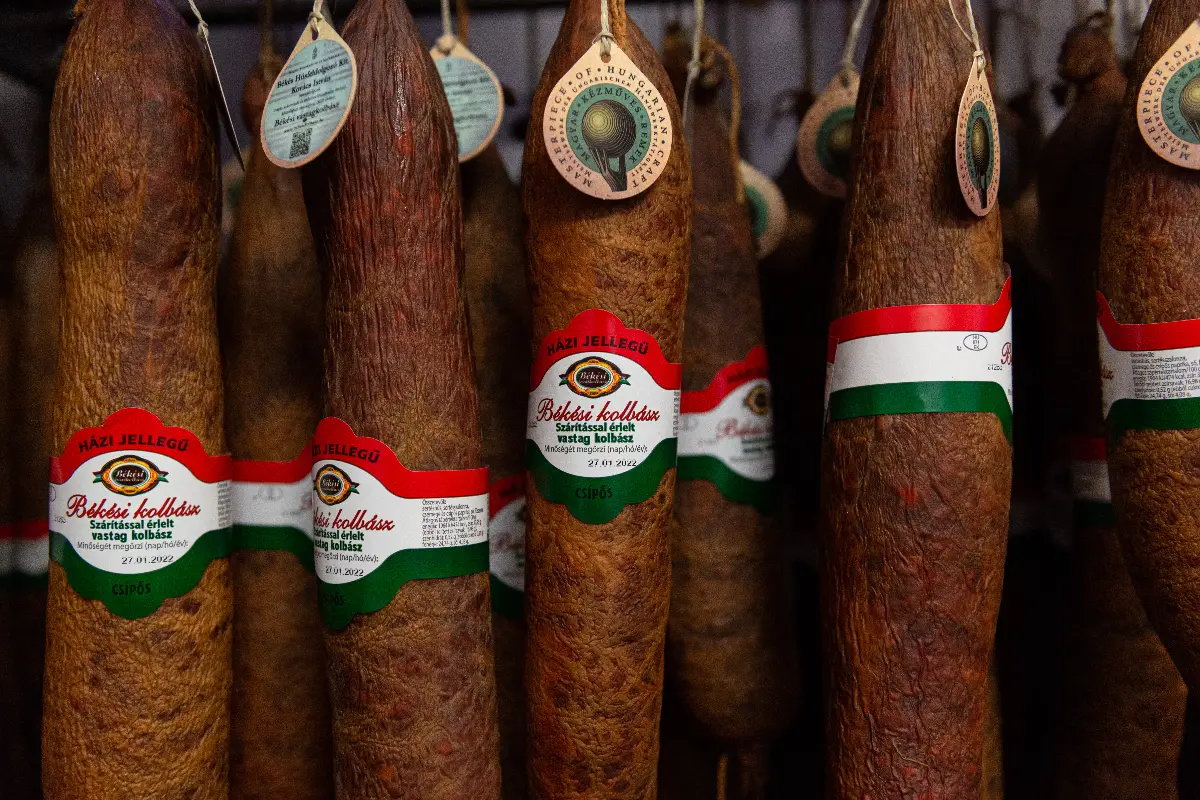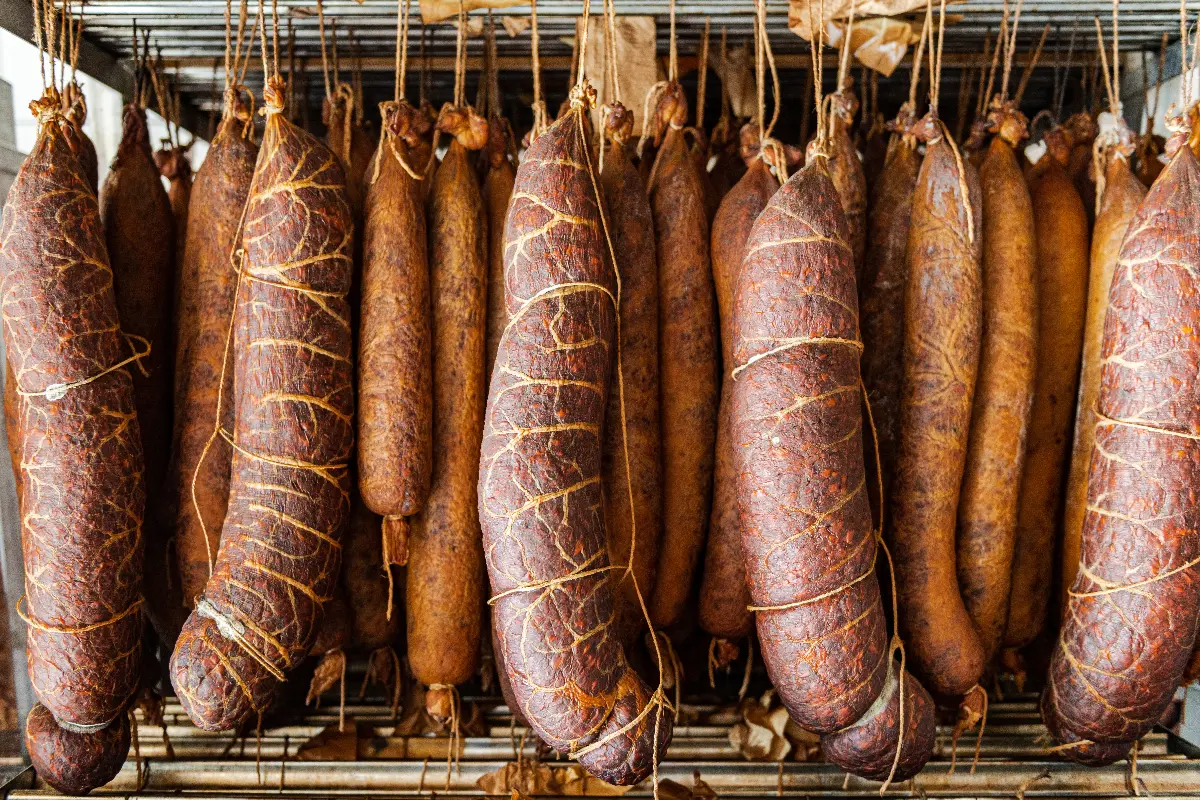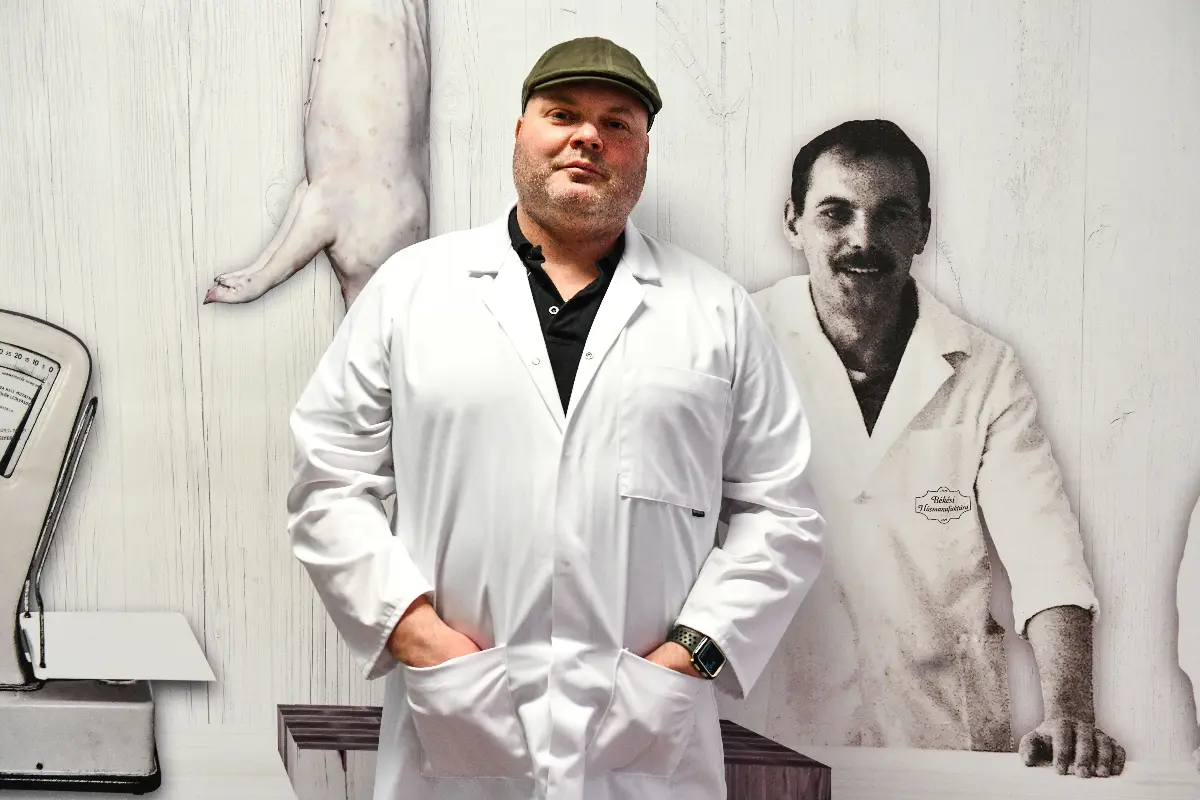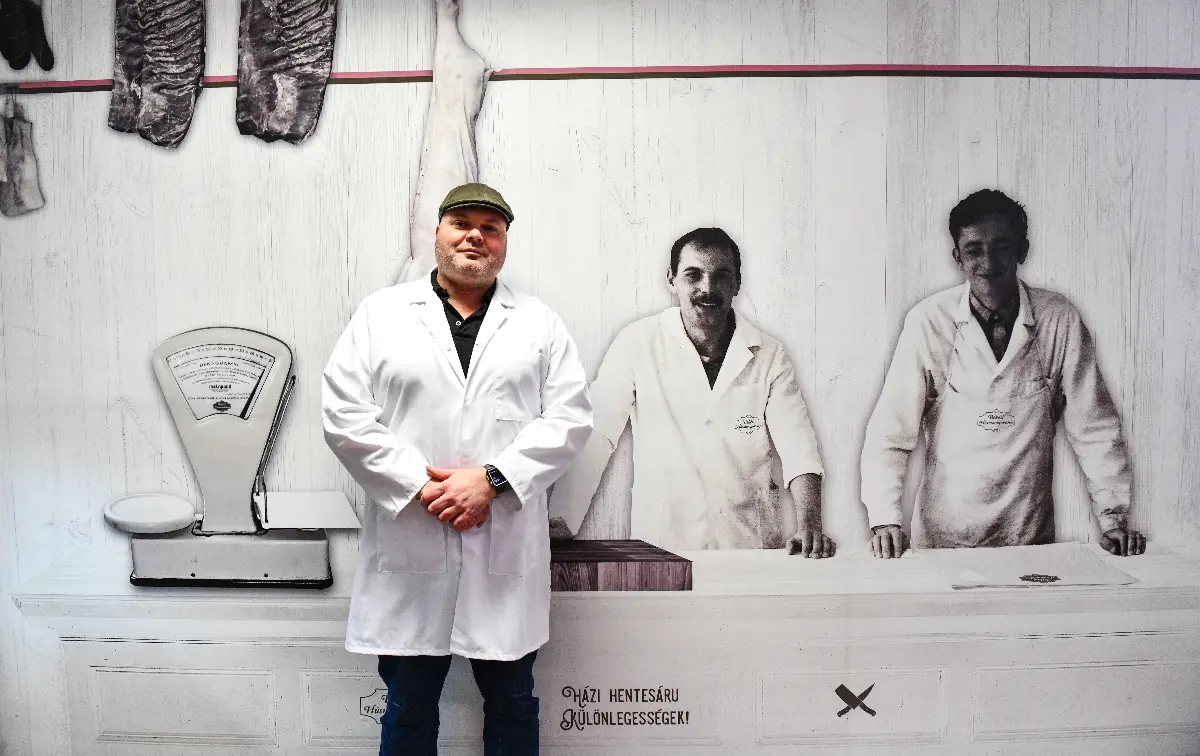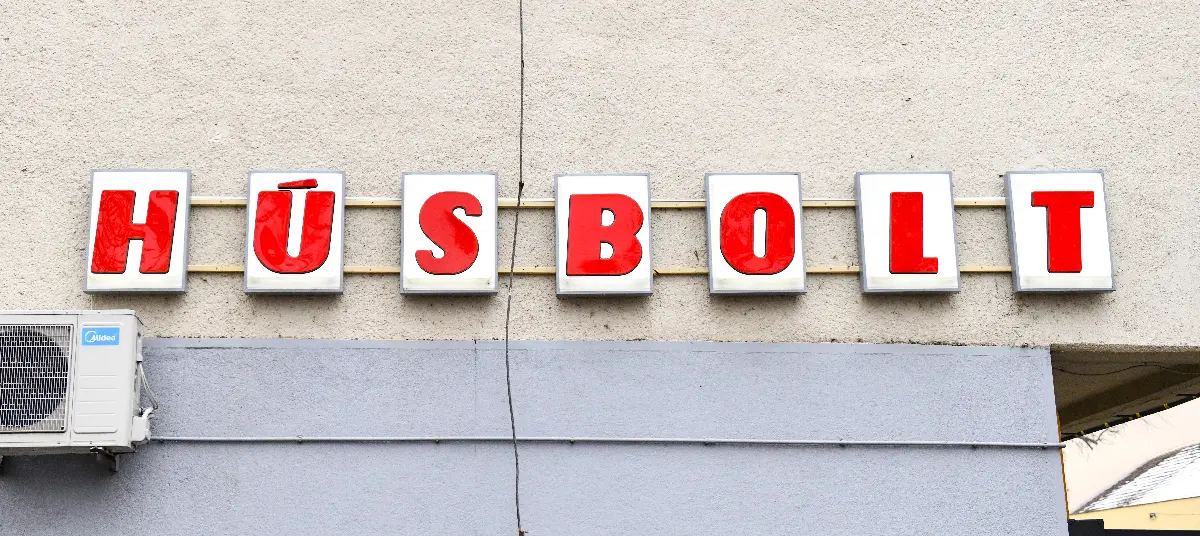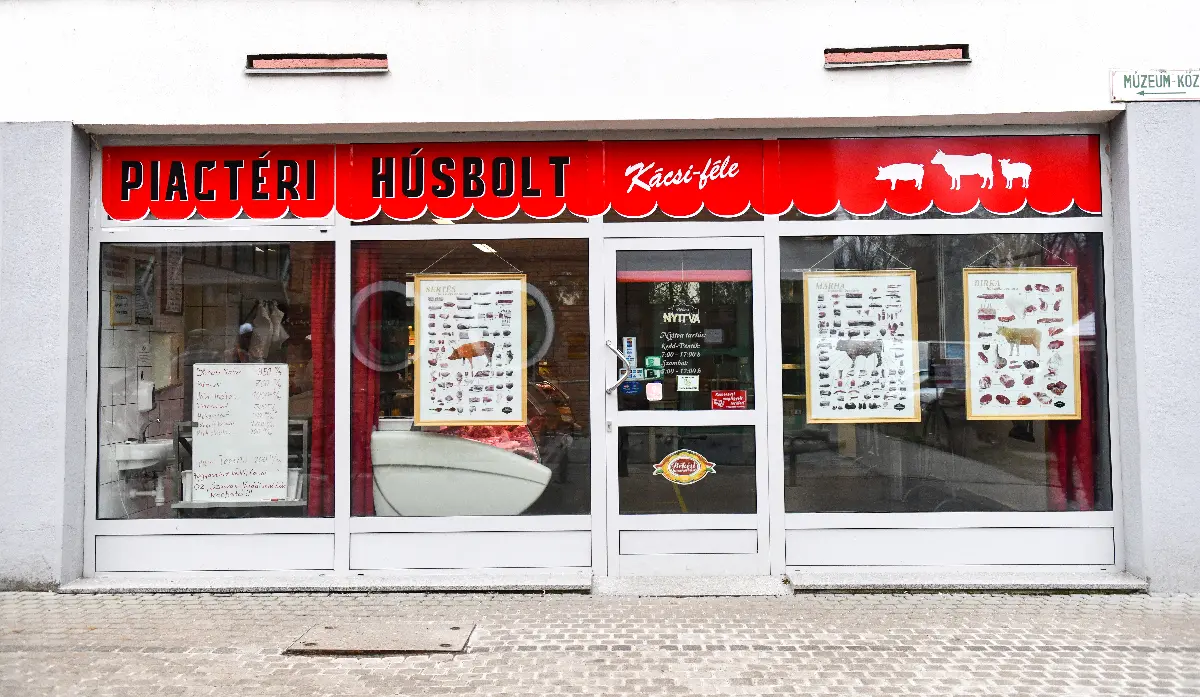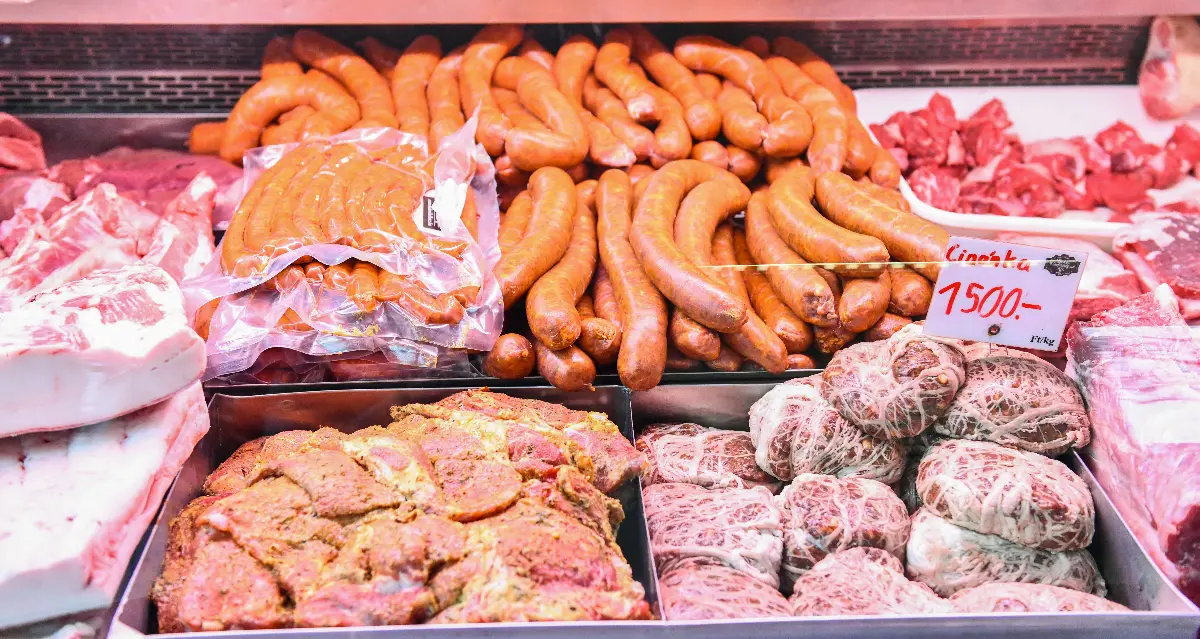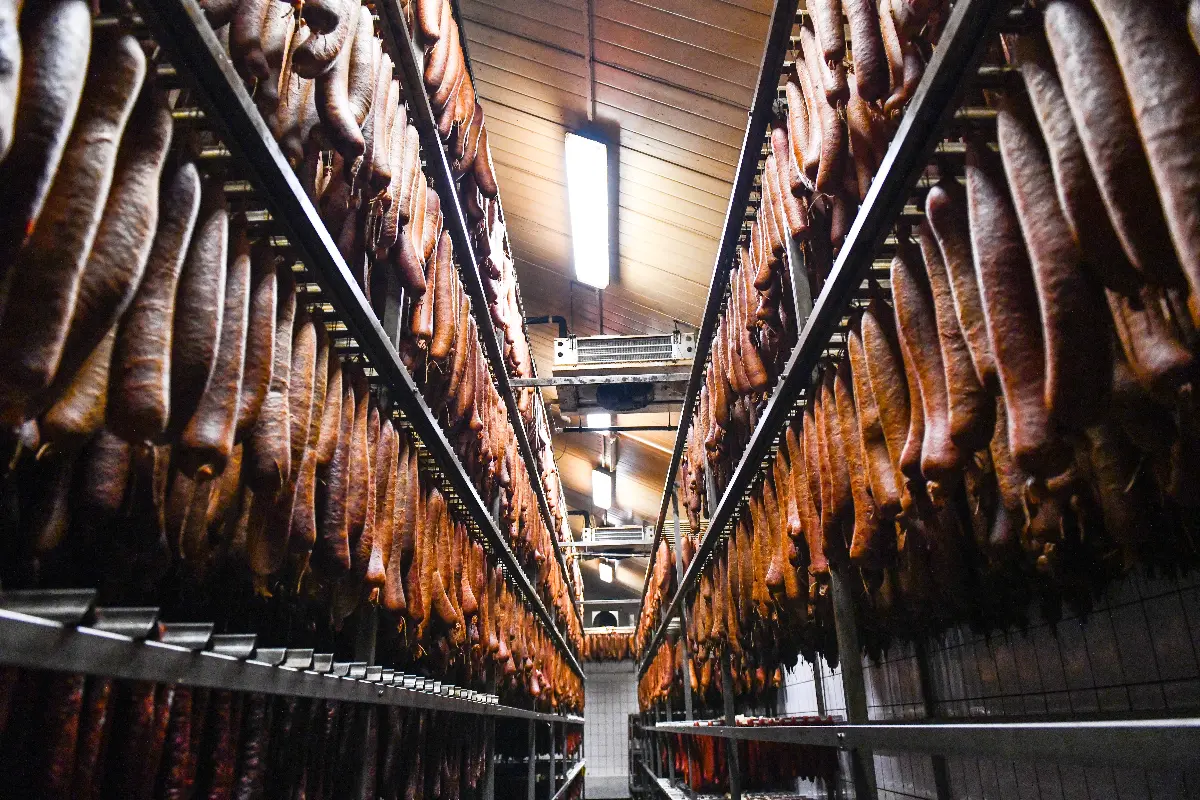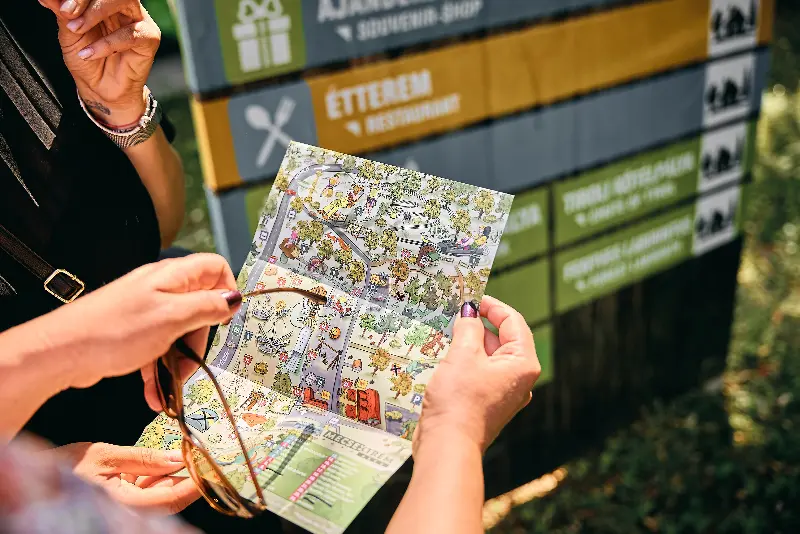
Helyszín címkék:
Meat with meat, sausage with cigánka
Jászberényi Attila
It is to the credit of the Kovács family that the sausage of Békés has become a brand. To the sausage manufacture we are guided by István Kovács junior manager and co-owner, who could hardly deny his origin from a butcher dynasty: his words express his bondless enthusiasm about processing meat and making it more savoury. “The point is to get nice meat” – says the police of the Kovács, then unique sausage is made from two-thirds of the meat, and premium products are produced from the rest of the raw material which can be found on butchers’ counters and in delicatessens. After manual boning and chopping, the meat is minced, and if it necessary, slowly cooked (steamed) at least for three hours. They always make just one product at a time, whether it is the raw sausage meat, brawn, bologna (not baloney), frankfurter, cold cuts, liverwurst or even cigánka as it has been done for several decades. The first secret point is mixing and seasoning. The family recipes are fifty years old (“these recipes are written down and kept in a proper place but they essentially do not differ from the domestic recipes of Békés”), in addition they are reliable so it is enough if Attila, who tastes the filling, tests the raw material only once. Sausages are stuffed manually too, only the size of the sausage casing is different from a domestic pig-slaughter. We will learn that there are “As many tastes as there are types of innards”. “Stomach, ‘kuláré’ (colon), small intestines, large intestines...the point, it has to be of animal origin.
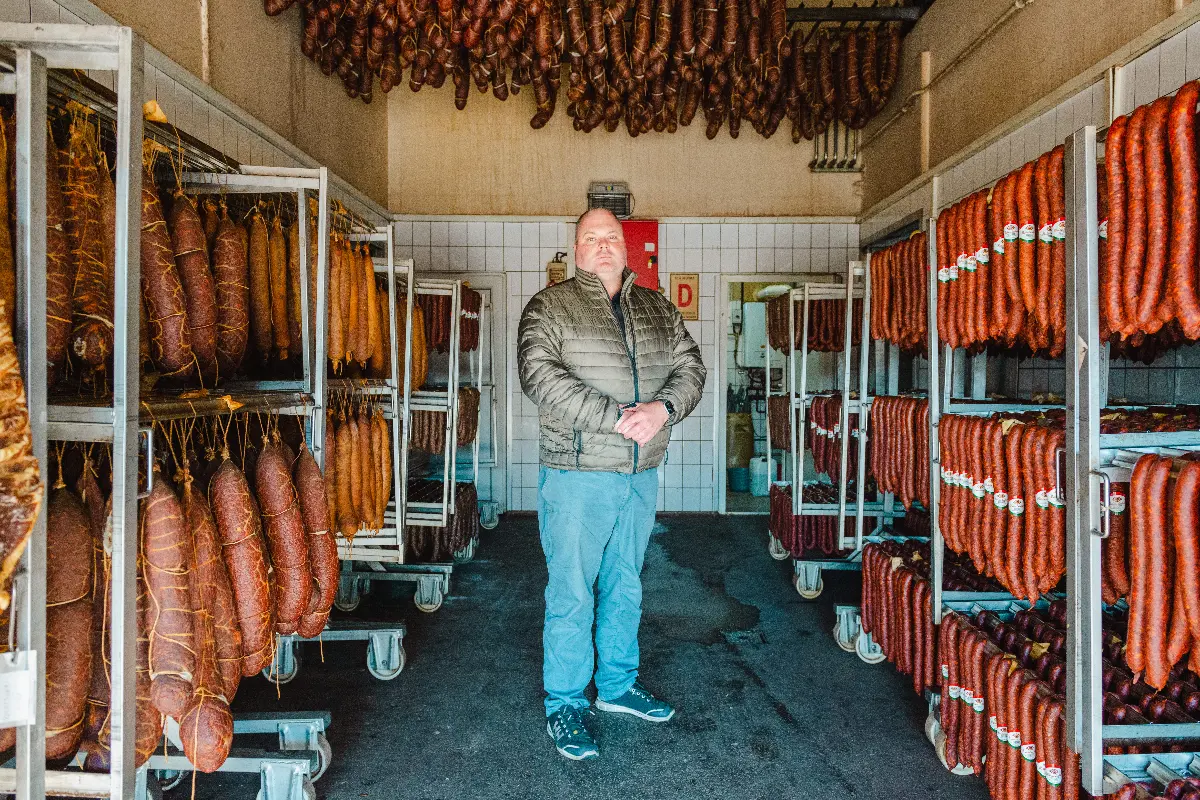
Until we have satisfied our eyes got satisfied, but now it’s the nose’s turn; the aroma of the sausage mixed with beechwood and smoke, that is to say, smoking and curing. The curing chamber is sausage heaven, we can hardly see the end of the rows, it is a riot of fragrance and appearances for the carnivorous homo sapiens. Here all the species belonging to the sausage family rest for several months, they are precisely labelled with their date of arrival. “The point is to establish the same conditions as at the case of drying in the chamber” – says István. “One thing cannot be achieved in industrial production: to include the fragrance of fruits, vegetables, and other things from the pantry into the system". The Kovács family are native to Békés, the grandfather who was the manager of the collective farm slaughtered pigs only a few times a year, but elder István chose the position of butcher instead of bartender, when considering these two prestigious local jobs. The legendary shop called ‘Piactéri Húsbolt’ (butcher’s market shop) advertised with retro neon letters, can still be visited, where, thanks to his son, there is a fresco of him in his youth with his assistant behind the counter. Today we can find all the delicacies from the family firm, the ‘Békési Húsmanufaktúra’ (Meat Manufacture of Békés).
Sausage with plum jam
Their first prize-winning product was giant salami stuffed into beef casing. However, the big hit was the sausage variant with plum jam exploding as the supernova of the sausage universe which stirred up a local storm as well.
“In 2012, at the Sausage Festival of Csaba people fought for the last morsels, we could hardly hold them back for professors and competitors just begged for them,”
recalls the inventor, Istvan junior. The extremely hot Maruga, and the Pityke sausage without paprika and cumin are also Mr. Kovács’s inventions, who considers the profession of a butcher an artistic activity rather than meat processing. We must mention the redemption of the processed meat products which were a dead-end for a long time, such as bologna with 80-90 percent meat content known, as the name of the sub-brand “The same as the past” (which is not baloney), frankfurter, cold cuts, brawn, liverwurst, and the crispy, properly juicy ‘lecsó’ sausage. We mustn’t leave out the barbecue either. Almost all products can be bought fried as well. Moreover at the Kovács’s we can buy brains with onion and cabbage toros style of Békés (containing plenty of sausages beside meat) which are almost extinct.
Cigánka
Although the greatest hit is the local speciality cigánka, which is a type of food consumed at the feast of a pig slaughter day in the "Viharsarok" (Storm Corner) region. Its name derives from the ancient rural habit of Slovak farmers who gave liver to gypsy beggar women (cigánka) who dropped in at their houses on pig killing days. Slovak peasants in Békés consumed neither the liver nor the blood of the porker before the First World War. But the innovation came from the fact that in a proper pig slaughter every inch of the sacrificed pig had to be used. So at the end of the sausage filler there was some leftover stuffing which was mixed with raw liver, to which was added some eggs, breadcrumbs and seasoning. They formed small balls, which were fried and rolled into the thin skin of the abdominal leaf-fat, known locally as cseplesz (in other places it is known as mesh, mesh fat, veil or crisped fat ). The racenet is greatly woven through fat so everything that is fried rolled in it remains juicy, which is what makes cigánka is a special dish. Those who like white pudding and sausages, will like cigánka – because it is halfway between the two.

From Gyula, Csaba, Békés
“Why does having sausages exist here?” ask the locals. In the 19th century the national pig market was organised in Gyula, there were the best fields here so the best feed crops too. And they had the best butchers there. The microclimate of Körös valley was needed, the humid air where the sausage cures and dries in a different way and does not desiccate easily. In addition the pungent tastes brought by the local Slovaks who migrated after the Ottoman Empire were also needed such as paprika, cumin and white pepper (before this, only salt, pepper and garlic had been added to sausages, making them almost like the above mentioned Pityke sausage). So the sausage from Gyula is considered t be the original Hungarian sausage today, but the sausage from Csaba, which is more Slovak with stronger seasoning became more popular. Gyula gave the butchers, Csaba gave the taste (after ‘45 it also gave the meat factory). People from Békés gave a lot of cumin to make the sausage grittier.

